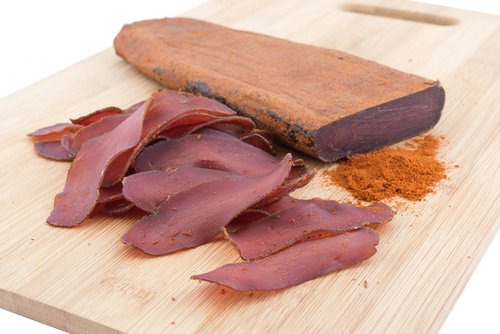Trail meals are among the most important things hikers consider when planning a long backpacking trip. Backpackers require lots of calories to fuel their bodies and maintain a high energy level while on the trail. All backpackers have their own ideas regarding the “best” trail foods, but all agree that meals for trips longer than a weekend must be calorie-dense, nutritious and lightweight. This critical weight limitation leaves the hiker with two options for preparing meals on the trail: Dehydrated foods and freeze-dried food.
What is Dehydrated Food?
Food dehydration is simple and has been practiced for hundreds of years. Dehydrated food is produced by using heat to slowly remove the water in fresh food. Generations of agrarian cultures relied on air drying, sun drying, and smoking to dehydrate food and preserve their harvest.
Today, conveniently packaged dehydrated foods are available through online outlets such as Harmony House and Packit Gourmet, but many backpackers dehydrate their own ingredients using a home dehydrator or convection oven. Home dehydration, though time consuming, is a low-cost method that enables people to control the ingredients and flavors that comprise their trail meals.
5 Advantages of Dehydrated Foods

1. Dehydrated foods are lightweight
All fresh foods contain water, which accounts for most of the food’s weight. The dehydration process eliminates nearly 98% of the water from fresh food. Removing the water makes the food lighter and easier to carry.
2. Dehydrated foods take up less space in a backpack
When water is removed from fruits and vegetables through dehydration, the plant cells shrink and compact, making the food significantly smaller. This is a major advantage over freeze-drying because. Freeze –dried foods retain their natural shape and size. The equation is simple: The smaller size allows you to fit more food in your pack.
Although dehydrated food may take on a shriveled-looking appearance after dehydration, it will “plump up” quickly when added to hot water.
3. Dehydrated foods have a long shelf-life
Dehydrated foods are ideal for backpacking because they do not require refrigeration. They can be stored safely at room temperature for extended periods of time, and are not affected by the temperature extremes a backpacker may encounter on a long distance hike. Of course, all food is better when consumed shortly after preparation, but properly stored dehydrated food will retain flavor and can be safely eaten for many years.
4. Dehydrated food retains its flavor
The dehydration process has little effect on the taste of fruits and vegetables. However, the texture of the food may change somewhat and take on a slightly chewy character. Dehydrated foods lend themselves to meals or dishes that require longer cooking times and are particularly useful in stews, soups, gravies, and sauces.
5. Dehydrated food is cost effective
A variety of dehydrated foods are available from online sources such as Harmony House and Packit Gourmet. Many backpackers use a home dehydrator to prepare their own meal ingredients. Home dehydration is easy and does not require expensive, specialized equipment. Although it is time consuming, home dehydration is a low-cost alternative that enables people to control the flavors and ingredients in their trail meals.




